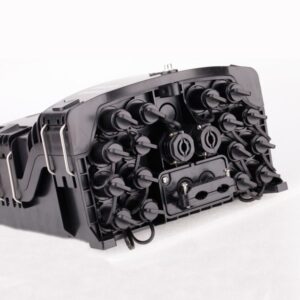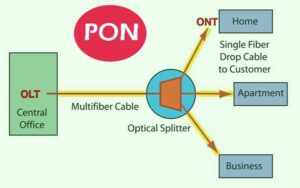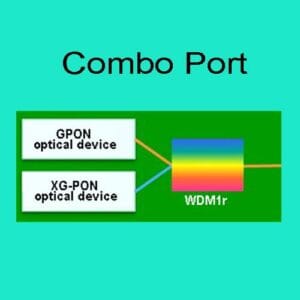Yingda as a fiber optic cable company, rooted in manufacturing and supplying all kinds of fiber optic products for XG-PON Networks from 2012. Our high-quality products and excellent services have won more markets and opportunities for our customers.
XG-PON Network (10 Gigabit Passive Optical Network) is a new generation of fiber optic access technology evolved from the existing GPON technology. It is an upgraded version of GPON aimed at providing higher transmission rates and longer transmission distances.
Compared with GPON, XG-PON has increased transmission rates in the downlink and uplink directions to 10 Gbps and 2.5 Gbps, respectively, providing users with greater bandwidth support.
The technological evolution of XG-PON is mainly reflected in its improvement of optical modulation methods and innovation in multi wavelength technology. These improvements enable XG-PON to better meet high bandwidth applications and future network requirements.
The deployment of XG-PON (10G-GPON) network requires following core fiber products to use in high-bandwidth scenarios such as homes, enterprises and video backhaul. Yingda can provide various optical network units compatible with Huawei, Cisco, Juniper, etc., to help you quickly and stably access the network.
Home/enterprise terminal: It can be integrated with XG-PON optical module and Wi-Fi 6 functions, providing full-house fiber coverage and 2.5G electrical port expansion. Or it can support XGS-PON 10G access, equipped with 2.5GE electrical port and Wi-Fi 7 AP expansion interface, suitable for enterprise multi-network integration scenarios.
Micro ONU device: can be directly inserted into the SFP port of the camera or AP to simplify the deployment of XGSPON terminals.
Singlemode fiber optic cable
XG-PON uses 1577nm downstream wavelength and needs to be transmitted through single-mode optical fiber. The existing ODN infrastructure (fiber internet splitter, fiber trunk cable) can be reused to reduce the cost of transformation.
SC connector are used for optical interface interconnection between OLT and ONU, such as SC-SC optical fiber jumper connecting sub-routers and switches.
Supports GPON/XGPON hybrid insertion, wavelength isolation through WDM modules, and ensures smooth upgrade of the existing network.
High-density passive optical splitter gpon
The original 1:64 or 1:128 splitter planar can continue to be used, it can carry XG-PON’s high bandwidth services without replacement.
Gigabit modem ONT, is a device that converts fiber optic signals into Ethernet signals. Fiber optic modem serves as a signal converter and access device in home or enterprise networks.
Although XG-PON technology can provide 10Gbps bandwidth, in order to actually enjoy this speed, multiple conditions need to be met:
At present, most fiber optic modem devices used in home and enterprise networks may still be based on traditional GPON technology, which may limit the actual access speed. In addition, the actual demand of household and enterprise users often does not reach the level of 10Gbps, which is also one reason why XG-PON technology has not been widely adopted yet.
So, although XG-PON technology can provide higher bandwidth, practical applications still need to consider the quality of fiber optic lines, optical modem equipment, and network access conditions, so not all users can enjoy 10Gbps speed.
They are different mainly from below 3 aspects:
If the central equipment has not been upgraded into XG-PON, it cannot be directly replaced, because the physical layer protocol is different.
And in China now if you had packages above 1000M, they are basically upgraded links,then you can replace it, or else can not.
And the most fast way is to directly consult the on-site installation personnel to see if they can be replaced or not.







Sorry that there’s no information that interests you. Please fill in the feedback form so that we can improve.